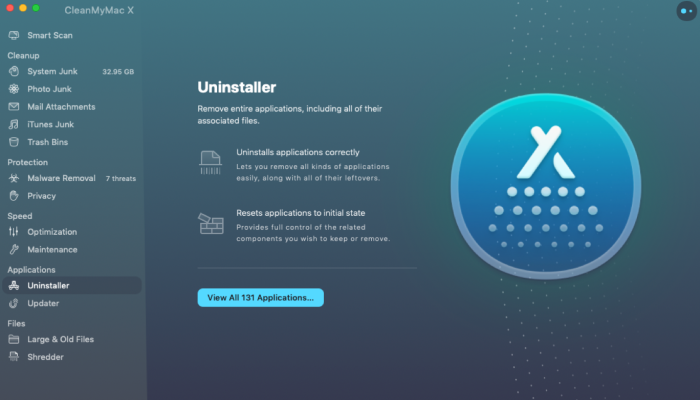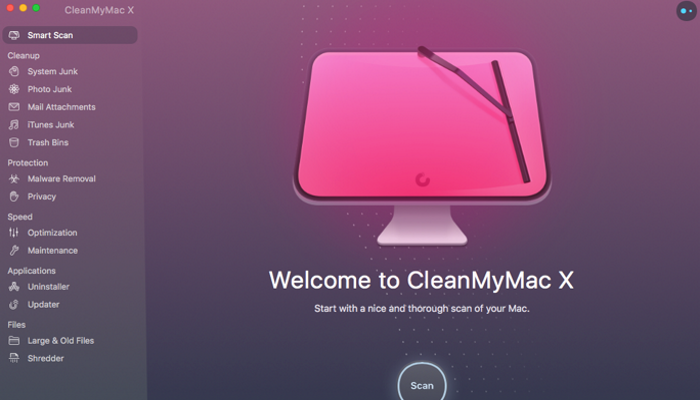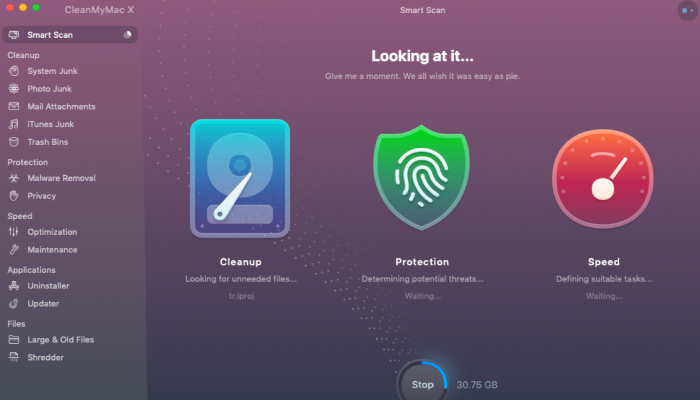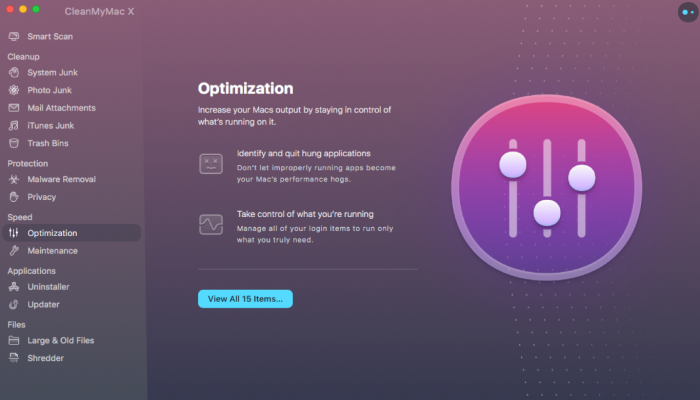What is taking up space on my hard drive?
Very often Mac OS users face the problem that there is not enough disk space available for an operation. It goes without saying, that you need to clean the hard drive and free up disk space. However, there is a question: what should be removed? As the rule, duplicate files take the biggest part of available memory. Sometimes such files are placed in different directories and generally it’s very difficult to find them. The second reason of out of memory problem is big files. When you are using your Mac sometimes it’s filling up with various large media files and documents. Very seldom it’s really difficult to find the directory of these files. So, Mac OS users decide to leave it as it is and after a while they face with our problem. That’s why we’ve prepared the detailed guide on how to free up disk space on Mac OS!
How to free up disk space on Mac OS
Here you have two options: use our automatic solution, which can help you to save your time and mental health, or you can use manual solution and built-in software.
How to free up disk space on Mac OS automatically?
We recommend you to use CleanMyMac X. This program allows you to keep your hard drive in a good state with the help of various applications such as junk files cleaner, shredder, system performance optimizer and etc. Download CleanMyMac X right now and clean your Mac hard drive easily and fast!
Download CleanMyMac
How to free up disk space on Mac OS manually?
There are a number of operations which you should proceed to fully free up disk space on Mac OS, or you can just take several steps in order to free a few.
Store in iCloud

Desktop and Documents
When storage space is needed, only the files you recently opened are kept on your Mac, so that you can easily work offline. Files stored only in iCloud show a download icon , which you can double-click to download the original file.
Mac OS Catalina: choose Apple menu > System Preferences, click Apple ID, then select iCloud in the sidebar: Store in iCloud turns on the Optimize Mac Storage setting on the right. Then click Options next to iCloud Drive: Store in iCloud turns on the Desktop & Documents Folders setting. To turn off iCloud Drive entirely, deselect iCloud Drive.
Mac OS Mojave or earlier: choose Apple menu > System Preferences, click iCloud, then click Options next to iCloud Drive. Store in iCloud turns on the Desktop & Documents Folders and Optimize Mac Storage settings.
Photos
Store all original, full-resolution photos and videos in iCloud Photos. When storage space is needed, only space-saving (optimized) versions of photos are kept on your Mac. To download the original photo or video, just open it.
Photos: choose Photos > Preferences, then click iCloud. Store in iCloud selects iCloud Photos and Optimize Mac Storage.
Messages
Store all messages and attachments in iCloud. When storage space is needed, only the messages and attachments you recently opened are kept on your Mac.
Messages: choose Messages > Preferences, then click iMessage. Store in iCloud selects Enable Messages in iCloud.
Optimize device Storage
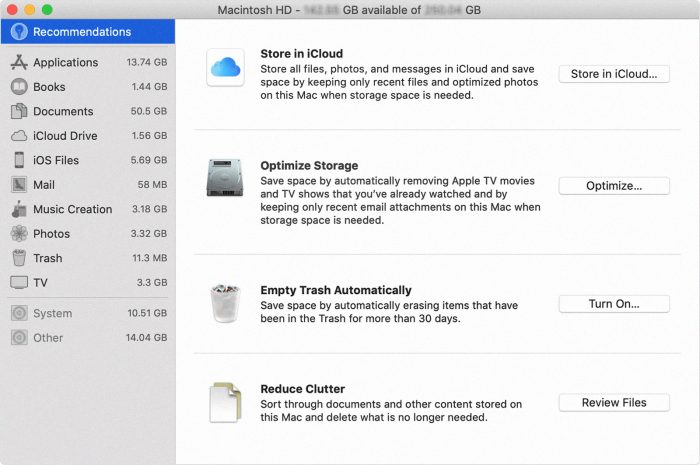
Automatically remove watched movies and TV shows
When storage space is needed, movies or TV shows that you purchased from the iTunes Store and already watched are removed from your Mac. Click the download icon next to a movie or TV show to download it again.
Mac OS Catalina: open the Apple TV app, choose TV > Preferences from the menu bar, then click Files. Optimize Storage selects “Automatically delete watched movies and TV shows.”
Mac OS Mojave or earlier: open iTunes, choose iTunes > Preferences from the menu bar, then click Advanced. Optimize Storage selects “Automatically delete watched movies and TV shows.”
Download only recent attachments
Mail automatically downloads only the attachments that you recently received. You can manually download any attachments at any time by opening the email or attachment, or saving the attachment to your Mac.
Don’t automatically download attachments: Mail downloads an attachment only when you open the email or attachment, or save the attachment to your Mac.
In Mail, choose Mail > Preferences from the menu bar, then click Accounts. In the Account Information section on the right, Optimize Storage sets the Download Attachments menu to either Recent or None.
Empty Trash Automatically
Permanently deletes files that have been in the Trash for more than 30 days.
Empty Trash Automatically: From the Finder, choose Finder > Preferences, then click Advanced. Empty Trash Automatically selects “Remove items from the Trash after 30 days.”
Reduce Clutter
This option helps you to identify large files and files you might no longer need. Click the Review Files button, then choose any of the file categories in the sidebar, such as Applications, Documents, Music Creation, or Trash. You can delete the files in some categories directly from this window. Other categories show the total storage space used by the files in each app. You can then open the app and decide whether to delete files from within it.
Was this tutorial helpful?



